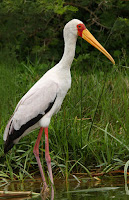Geography for Development and Biodiversity conservation(Sustainable approach)
Despite the challenges caused by developeemt, there is still a strong link between biodiversity conservation and economic development anywhere in the world.
A major point in time is the setup of an indutrial farm in an area not being established in major buiodiversity zone such as bird or other species migration corridor/routes.
This will most likely have a low impact on the biodiversity while keeping the developemt serving its purpose thence generating capital for the state.
On the other hand,seting the same developemt in the entities aforementioned route will disrup movement or else kill species on the move including (Near threatened,vunerable species) thence resulting in economic losses due to the regular interruptions of the developement caused by the regular species-developemt collisions.
This way, both the economy and environment are affected.
There is therefore a very urgent need for scientists to form strong partnerships that allow for well-informed decisions on sustainable development that benefits both the economy and environment to be made, based on reliable scientific data on species distributions and movements.
CASE STUDY
A field work to map biodiversity investments in Nabugabo Ramsar site was proposed by PREPARED Program(http://www.tetratech.com/en/projects/planning-for-resilience-and-sustainability-in-east-africa) for further expansion of the Ramsar to 700,000 hectares and also intended to enrich the guide book (Information hand book for sustaonable use by tour guides and investors in the ramsar) with more precise biodiversity information for policy influence and situation analysis on the available and important biodiversity (Fish, Plants, Insects, Mammals and reptiles) in Nabugabo .This project was funded to http://natureuganda.org/ as the implementing partner
MY GIS MAPS FOR THE RAMSAR
 | ||
 |
| Beach Investement sin the Ramsar |
The plant, fish and bird biodiversity data were first taken in Kalangala fish landing. This then was followed with a trip to Lake Birinzi for other biodiversity opportunities the Ramsar inhabits and economic investments available
Nabugabo Ramsar has a variety of reptiles and mammals including birds especially birds in caves. The most interested in reptiles were the Python snakes in the ramsar
Emergent Threats :
There is Unregulated resource harvesting, infrastructure development, invasive species, and poor agricultural practices are key threats to the ecosystem services provided by Nabugabo wetlands. Despite the Ramsar inhabiting Rare species of plants
 |
| A rare Insectivorous plant in the ramsar |
Ecologically sensitive areas in the ramsar
Lake Nabugabo wetland sytem Ramsar site has areas that are ecologically sensitive because they contain rare or endangered plants and animals. There are also places that are cultural heritage sites especially along the shores of lake Victoria and satellite lakes that are valued by communities.
Fish is one of the major resources in Lake Nabugabo wetland system Ramsar site whose breeding grounds are located along the lake shores and therefore degrading them can easily deplete the fish.
Therefore these ecologically sensitive areas have been marked as shown in the map and need protection by Government to ensure that the ecological integrity is sustained
READ AND DOWNLOAD THE NABUGABO MANAGEMENT PLAN HERE
There is therefore a need for developers/investors to always put ecological measure in there work
There is therefore a need for developers/investors to always put ecological measure in there work





am moved by your work GILBERT
ReplyDelete